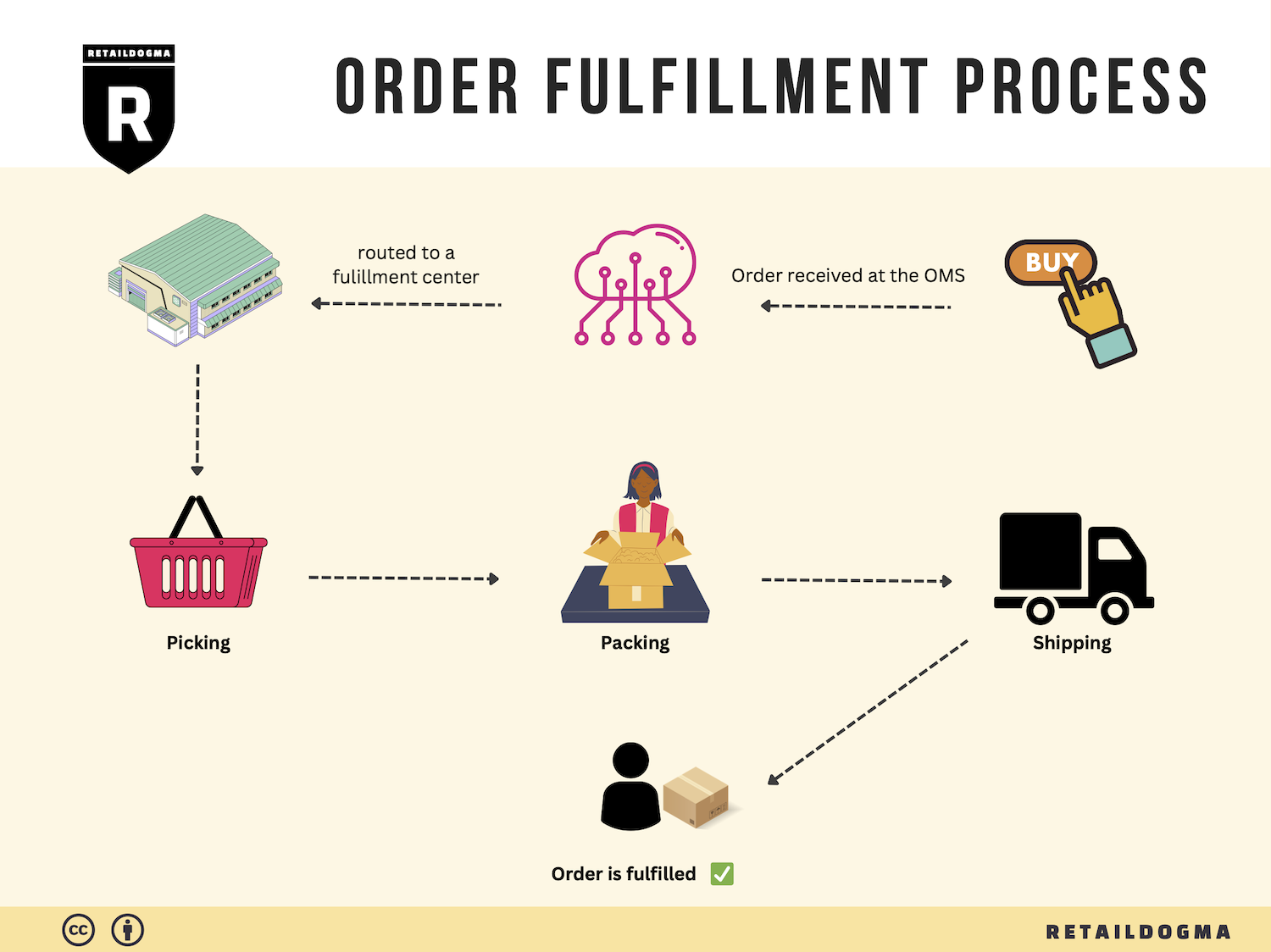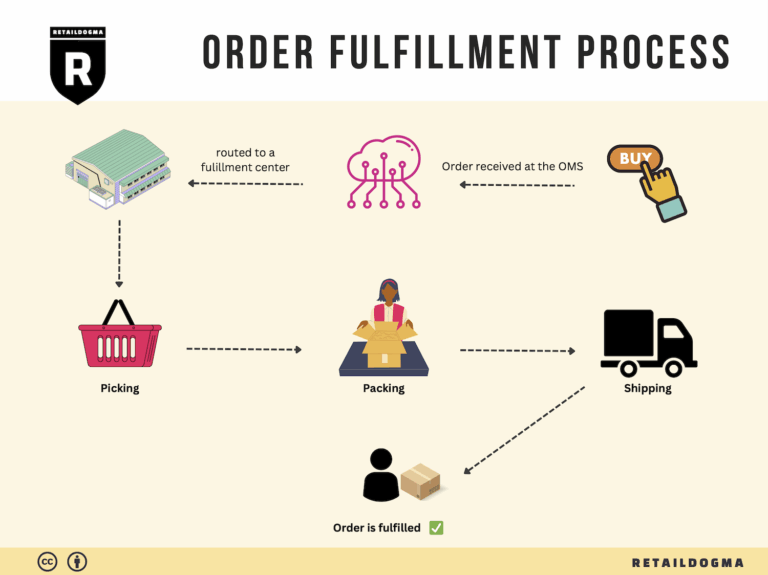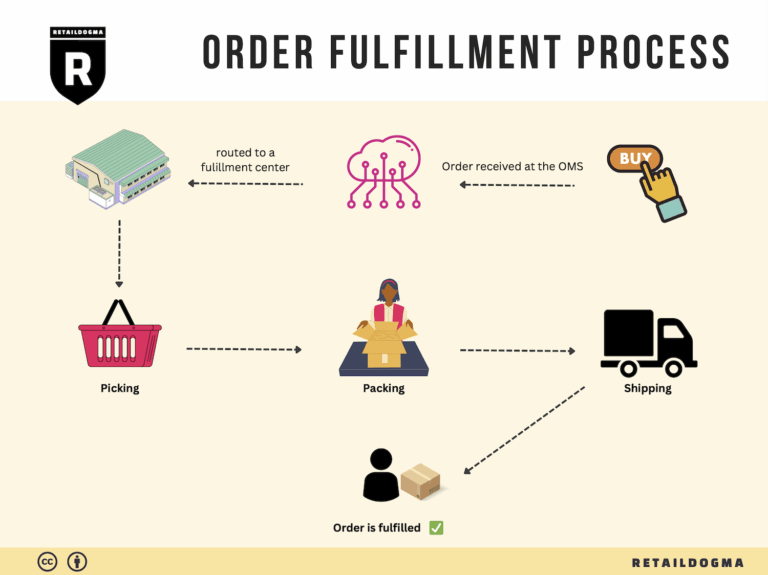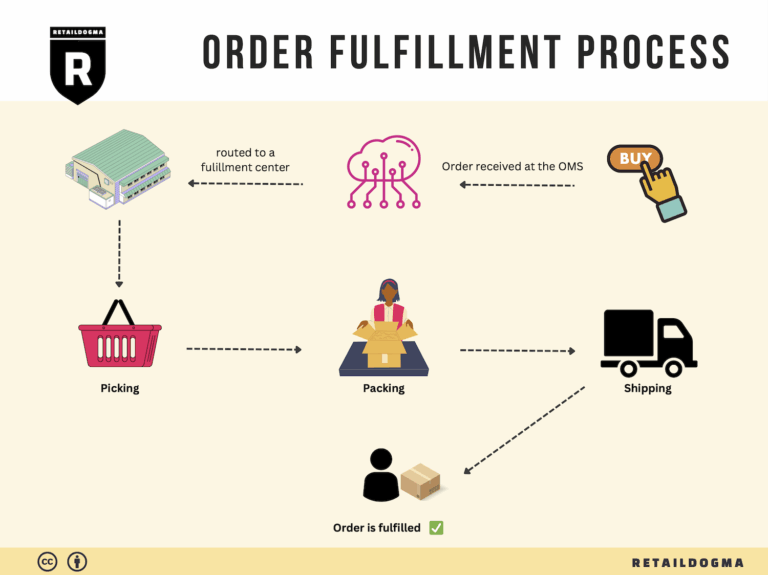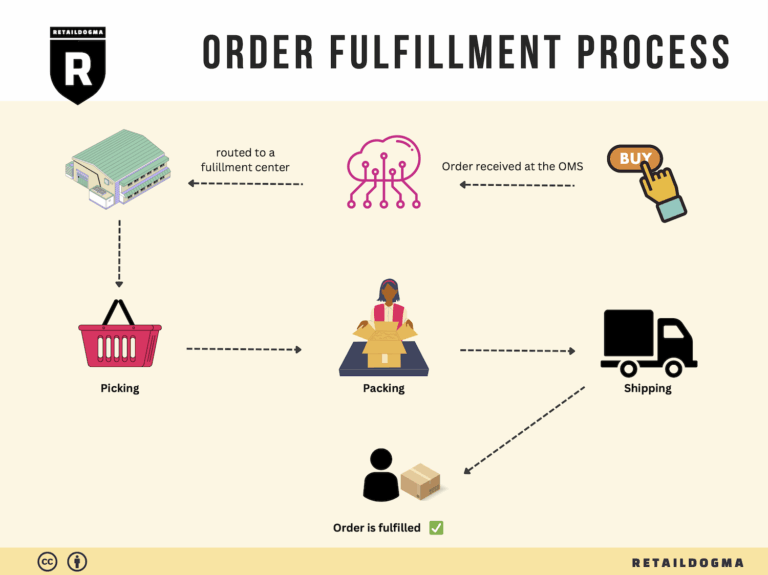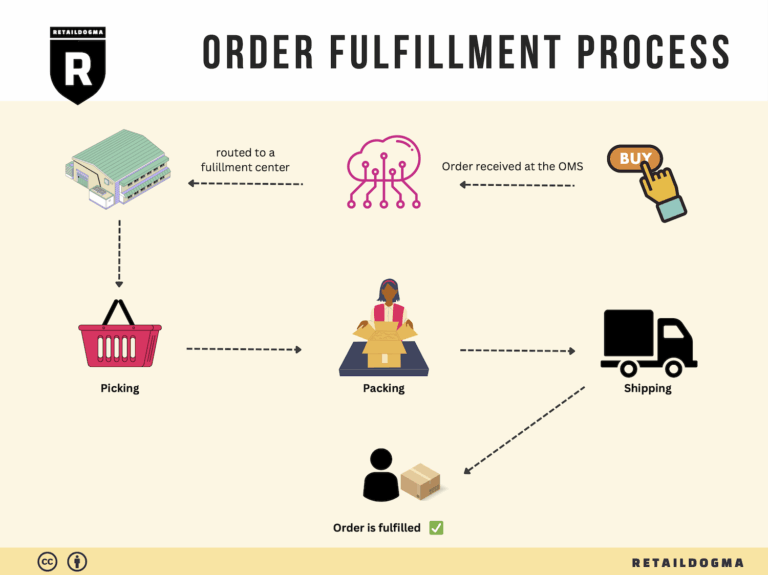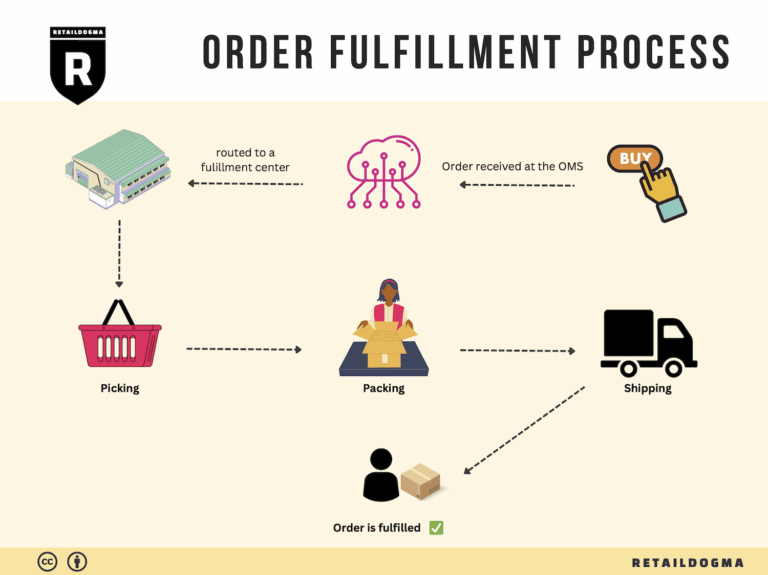How Order Fulfillment Works: A Step-by-Step Guide for Businesses
What is E-commerce Fulfillment? An Introduction for Growing Businesses
Understanding the Challenges of E-commerce Fulfillment
As an e-commerce business owner, you may find yourself overwhelmed with the complexities of packing and shipping orders. The excitement of growing your online sales can quickly be overshadowed by the logistical challenges that come with fulfilling customer orders efficiently and accurately. This is where e-commerce fulfillment steps in, acting as the backbone of your operations. Simply put, fulfillment refers to the process of getting a product from your inventory to your customer’s doorstep, encompassing everything from order processing and inventory management to shipping and returns.
The Landscape of E-commerce Fulfillment Models
In this guide, we will explore the various fulfillment models available to growing businesses. From using third-party logistics providers (3PL) to Amazon’s Fulfillment by Amazon (FBA) service, each option has its unique advantages and challenges. Understanding these models will help you determine which aligns best with your business goals and customer expectations.
Core Fulfillment Services Explained
We will also delve into the core services associated with e-commerce fulfillment, including warehousing, inventory management, order processing, shipping, and returns management. Knowing what services are available will empower you to make informed decisions about which aspects of fulfillment you can handle in-house and which you may want to outsource.
Selecting the Right Fulfillment Partner
Choosing the right fulfillment partner is crucial for scaling your business. In this guide, we will provide practical tips on evaluating potential partners based on factors such as their technological capabilities, geographic reach, and customer service standards. The right partner can streamline your operations, enhance customer satisfaction, and ultimately contribute to your bottom line.
Pricing Considerations in Fulfillment
Understanding pricing structures is essential for budgeting and financial planning. We will break down the common pricing models used in fulfillment services, helping you to anticipate costs and identify opportunities for savings.
Empowering Your Business Decisions
The goal of this guide is to empower you as a business owner to make smart, strategic decisions about your logistics. By gaining a clear understanding of e-commerce fulfillment, you will be better equipped to choose the right models and partners that align with your growth ambitions. Let’s navigate the world of fulfillment together and unlock the potential for your e-commerce success.
What You’ll Learn In This Guide
- What is E-commerce Fulfillment? An Introduction for Growing Businesses
- The Order Fulfillment Process: From ‘Buy’ Button to Customer’s Door
- Comparing Fulfillment Models: In-House vs. 3PL vs. Dropshipping
- A Deep Dive into Amazon FBA: Pros, Cons, and Who It’s For
- Core Services Offered by Fulfillment Centers
- How to Choose a Fulfillment Partner: A 6-Point Checklist
- Understanding Fulfillment Pricing: A Breakdown of Common Fees
- Frequently Asked Questions (FAQs) about Fulfillment
- Conclusion: Is Outsourcing Fulfillment the Right Move for Your Business?
- Important Disclaimer
The Order Fulfillment Process: From ‘Buy’ Button to Customer’s Door
1. Receiving Inventory
The first step in the order fulfillment process is receiving inventory. When products arrive at the fulfillment center, they are unloaded and checked against purchase orders to ensure accuracy. This process often involves using a SKU (Stock Keeping Unit) system to track each item. Each product is scanned and verified, ensuring that the right quantities and specifications have been received.
This step is crucial because it sets the foundation for the entire fulfillment process. If errors occur during this stage—such as incorrect quantities or damaged goods—these issues can propagate downstream, leading to delays, customer dissatisfaction, or increased return rates. Accurate receiving helps maintain inventory integrity, which is vital for efficient order processing and customer service.
2. Warehouse Storage
Once inventory is received, it is moved to designated storage areas within the fulfillment center. This step involves organizing products in a systematic manner that maximizes space and facilitates easy access. Fulfillment centers often utilize a warehouse management system (WMS) to categorize and track inventory locations.
Effective storage solutions can significantly impact operational efficiency. Proper organization minimizes the time employees spend searching for products, thereby speeding up the subsequent picking process. Additionally, a well-organized inventory allows for better space utilization, which can reduce overhead costs. As businesses scale, implementing advanced storage solutions, such as vertical storage systems or automated shelving, can further enhance efficiency.
3. Order Picking
Order picking is the process of retrieving items from the warehouse to fulfill customer orders. When a customer places an order, a pick list is generated, detailing the items and their respective locations in the warehouse. Employees or automated systems use this list to locate and gather the necessary products.
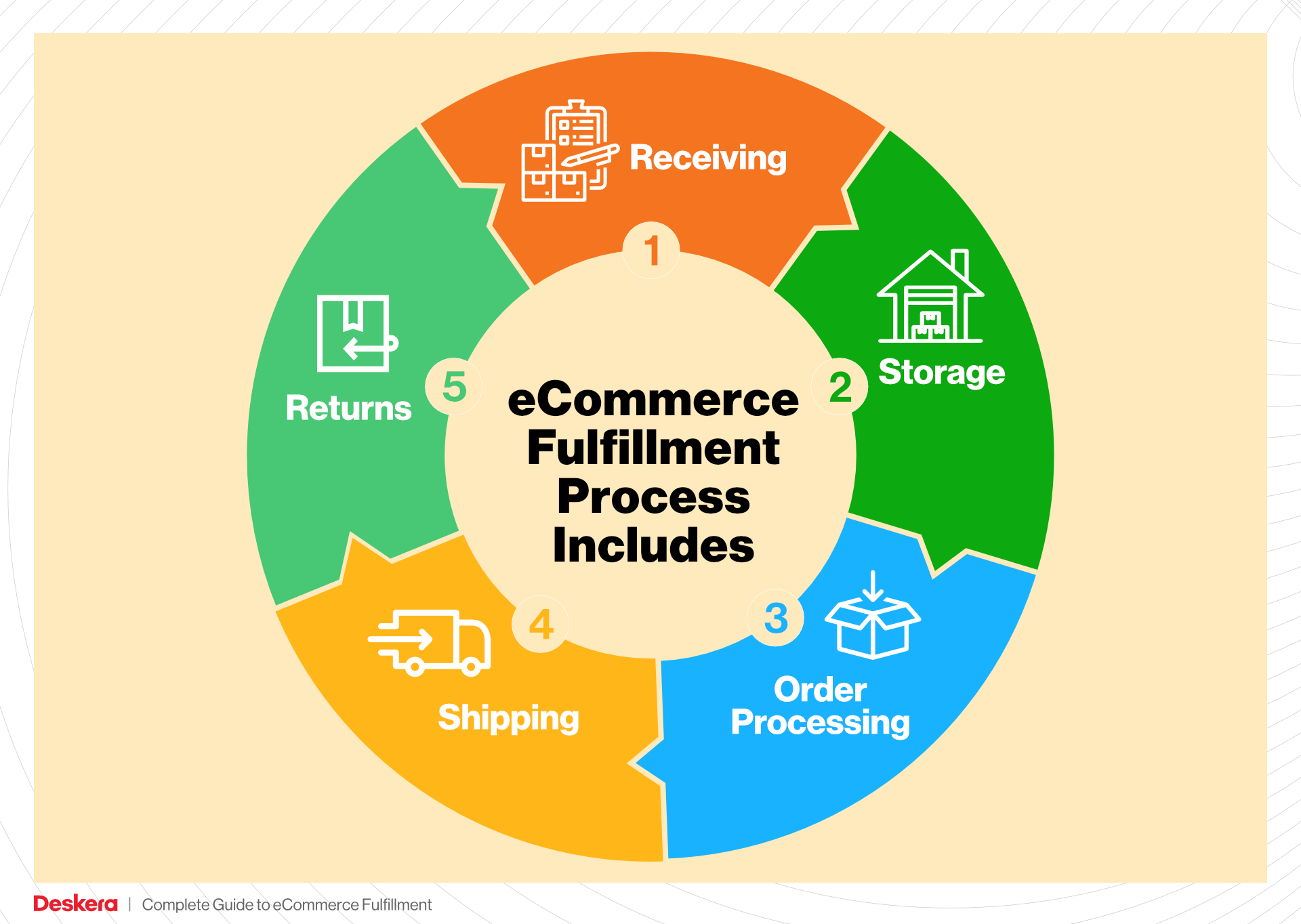
This step is pivotal for ensuring that orders are fulfilled accurately and promptly. The efficiency of the picking process directly influences order lead times and customer satisfaction. Strategies such as batch picking (where multiple orders are picked simultaneously) or zone picking (where different employees are responsible for different sections of the warehouse) can optimize this process. As e-commerce businesses grow, investing in automation technologies, such as robotic picking systems, can further streamline operations and reduce labor costs.
4. Order Packing
Once items are picked, they move to the packing stage, where products are prepared for shipment. During this step, items are checked for quality and correctness before being placed into appropriate packaging. This stage often involves the use of packing slips, which detail the contents of the shipment and serve as a confirmation for the customer.
Packing is critical as it protects products during transit and enhances the customer experience. Well-packaged items reduce the risk of damage, leading to fewer returns and better customer reviews. Moreover, branding opportunities arise during this stage; using custom packaging can create a memorable unboxing experience that encourages repeat purchases. As businesses scale, adopting automated packing solutions can improve speed and accuracy while reducing packaging waste through optimized material usage.
5. Shipping & Delivery
The final step in the order fulfillment process is shipping and delivery. Once packages are packed, they are labeled and sorted for dispatch to various shipping carriers. This stage often requires coordination with multiple logistics partners to ensure timely delivery. Key terms associated with this step include last-mile delivery, which refers to the final leg of the shipping journey to the customer’s doorstep.
Shipping and delivery are crucial for maintaining customer satisfaction. Fast and reliable delivery options are often deciding factors for customers when choosing where to shop. Businesses must evaluate their shipping strategies, including carrier selection and delivery speed, to remain competitive. As companies scale, leveraging data analytics can help optimize shipping routes and costs, while exploring partnerships with local delivery services can enhance last-mile efficiency and customer service.
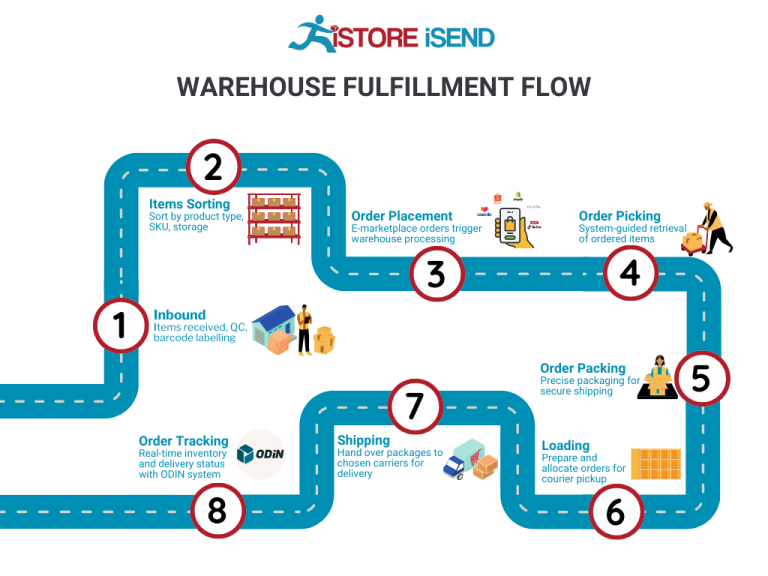
In conclusion, understanding and optimizing each step of the order fulfillment process is essential for e-commerce businesses looking to scale. By focusing on accuracy, efficiency, and customer satisfaction throughout these stages, businesses can build a robust supply chain that supports growth and enhances their competitive edge in the market.
Comparing Fulfillment Models: In-House vs. 3PL vs. Dropshipping
Fulfillment Model Comparison Table
| Model | Who Handles Inventory | Best For (Business Stage) | Key Advantage | Key Disadvantage |
|---|---|---|---|---|
| In-House Fulfillment | The business itself | Established businesses with stable demand | Complete control over inventory and fulfillment processes | High fixed costs and labor management challenges |
| Third-Party Logistics (3PL) | Outsourced to a logistics provider | Growing businesses looking to scale quickly | Flexibility and access to expertise in logistics | Less control over the fulfillment process |
| Dropshipping | Supplier or manufacturer | Startups and businesses testing markets | Low upfront investment and minimal risk | Lower margins and potential quality control issues |
In-House Fulfillment
In-house fulfillment involves a business managing its own inventory and fulfillment processes within its own facilities. This model is typically best suited for established businesses with stable demand and a clear understanding of their logistics requirements. The primary advantage of in-house fulfillment is the complete control it offers over inventory management, order processing, and customer service. Businesses can tailor their fulfillment operations to meet specific customer needs, ensuring a high level of service and quick response times. However, this model also comes with significant challenges. It often entails high fixed costs related to warehousing, staffing, and equipment, making it less flexible in response to fluctuating demand. Additionally, managing a fulfillment operation requires expertise in logistics and can strain resources, especially for small to medium-sized businesses.
Third-Party Logistics (3PL)
Third-party logistics (3PL) providers manage logistics and fulfillment services on behalf of businesses. This model is ideal for growing businesses that want to scale quickly without the overhead associated with in-house operations. 3PLs offer a wealth of expertise in logistics, allowing businesses to leverage advanced technology and streamlined processes to improve efficiency and reduce costs. By outsourcing fulfillment, businesses can focus on their core competencies—such as product development and marketing—while leaving the complexities of shipping, warehousing, and inventory management to experts. However, this model does come with its drawbacks. Businesses may experience less control over their inventory and fulfillment processes, which can lead to inconsistencies in service levels. Additionally, depending on the 3PL’s capabilities, there may be limitations in customization or specific handling requirements that could affect customer satisfaction.
Dropshipping
Dropshipping is a fulfillment model where the retailer does not hold inventory but instead transfers customer orders directly to a supplier, who then ships the products directly to the customer. This model is particularly advantageous for startups and businesses testing new markets, as it requires minimal upfront investment and eliminates the risk of unsold inventory. Retailers can offer a wide range of products without the associated costs of warehousing and logistics, making it an attractive option for those looking to enter the e-commerce space with limited resources. However, dropshipping also presents several challenges. Margins can be lower than other fulfillment models due to the costs associated with relying on suppliers, and there may be quality control issues if the supplier fails to meet expectations. Furthermore, the retailer has limited control over shipping times and inventory levels, which can lead to customer dissatisfaction if products are delayed or out of stock.
Conclusion
In summary, choosing the right fulfillment model depends on various factors, including the stage of your business, the nature of your products, and your operational capabilities. In-house fulfillment offers control and customization but at a higher cost and resource demand. Third-party logistics provide flexibility and expertise, ideal for scaling businesses, though at the expense of some control. Dropshipping presents a low-risk entry point for new businesses but may lead to challenges with margins and quality. Each model has its unique set of advantages and disadvantages, and understanding these will help e-commerce business owners make informed decisions as they scale their operations.
A Deep Dive into Amazon FBA: Pros, Cons, and Who It’s For
Understanding Fulfillment by Amazon (FBA)
Fulfillment by Amazon (FBA) is a service offered by Amazon that allows sellers to store their products in Amazon’s fulfillment centers. Amazon takes care of storage, packaging, shipping, and customer service for these products. This service is particularly beneficial for e-commerce business owners who want to leverage Amazon’s extensive logistics network to enhance their sales and streamline their operations.
When a customer places an order for a product listed with FBA, Amazon picks, packs, and ships the product on behalf of the seller. Additionally, Amazon handles returns and customer inquiries, allowing sellers to focus more on their business strategy and less on logistical challenges.
How FBA Works
-
Setting Up FBA: Sellers begin by creating an Amazon Seller account and enrolling in the FBA program. They can then create product listings and prepare their inventory for shipment to Amazon’s fulfillment centers.
-
Shipping Inventory: Sellers send their products to one or more of Amazon’s fulfillment centers. Amazon provides guidelines on how to package and label products to ensure they are processed efficiently.
-
Storage and Handling: Once the products arrive at the fulfillment center, Amazon stores them in their warehouses. The inventory is monitored, and sellers can check their stock levels via the Seller Central dashboard.
-
Order Fulfillment: When a customer places an order, Amazon’s system automatically selects the nearest fulfillment center with available inventory. Amazon picks the item, packs it, and ships it directly to the customer.
-
Customer Service and Returns: Amazon handles all customer service inquiries and returns related to FBA products. This includes processing refunds and managing customer feedback, which helps maintain a high level of customer satisfaction.
Pros of FBA
-
Prime Eligibility: One of the most significant advantages of FBA is that products become eligible for Amazon Prime. This means that sellers can attract a vast audience of Prime members who prefer fast, free shipping options, potentially increasing sales significantly.
-
Customer Trust: Selling via FBA enhances customer trust. Products fulfilled by Amazon often receive a “Fulfilled by Amazon” badge, which reassures customers about the reliability of their purchase and the quality of service.
-
Multi-Channel Fulfillment: FBA is not limited to Amazon.com. Sellers can utilize FBA for orders from other sales channels such as eBay, Shopify, or their own websites. This allows for streamlined logistics and inventory management across various platforms.
-
Reduced Operational Burden: By outsourcing logistics to Amazon, sellers can focus on other aspects of their business, such as marketing and product development, while Amazon manages inventory storage, order processing, and customer service.
-
Scalability: FBA allows businesses to scale quickly. As sales increase, sellers can send more inventory to Amazon without needing to invest in additional warehouse space or staff.
Cons of FBA
-
High Fees: While FBA offers numerous benefits, it comes at a cost. Sellers incur storage fees, fulfillment fees, and additional charges for long-term storage. These fees can significantly eat into profit margins, especially for low-cost items.
-
Strict Inventory Rules: Amazon has strict policies regarding inventory management. Sellers must adhere to guidelines for labeling, packaging, and shipping. Failure to comply can result in additional fees or even the removal of listings.
-
Commingling Risks: With FBA, inventory from multiple sellers may be stored together. This commingling can lead to issues such as receiving returns or complaints for items that were not originally yours, creating potential challenges in customer satisfaction and brand reputation.
-
Lack of Control: By using FBA, sellers relinquish some control over the shipping process. This includes shipping speeds, packaging methods, and handling of customer complaints. Any issues that arise may reflect poorly on the seller, even if they are due to Amazon’s processes.
-
Inventory Management Complexity: Managing stock levels and forecasting demand can become complicated with FBA. Sellers must ensure they have enough inventory to meet demand without incurring long-term storage fees for excess stock.
Who is FBA Best For?
Fulfillment by Amazon is ideal for various types of sellers, particularly:
-
Small to Medium-Sized Businesses: Those looking to scale quickly without investing heavily in logistics infrastructure can benefit immensely from FBA’s capabilities.
-
E-commerce Entrepreneurs: Startups and individual sellers who want to reach Amazon’s vast customer base while offloading fulfillment tasks find FBA appealing.
-
Sellers with High Volume: Businesses with a high volume of sales can leverage FBA to manage logistics efficiently, especially those that sell items that are frequently in demand.
-
Brands Looking for Increased Visibility: Sellers aiming to enhance their brand presence on Amazon can use FBA to gain access to Prime customers and improve their product rankings through Amazon’s algorithms.
In conclusion, while Fulfillment by Amazon presents a robust solution for sellers looking to optimize their logistics and reach a broader audience, it is essential to carefully weigh the pros and cons. By understanding how FBA fits into your business model, you can make informed decisions that will support your growth and operational efficiency.
Core Services Offered by Fulfillment Centers
Inventory Management & Warehousing
Fulfillment centers are equipped to handle extensive inventory management and warehousing services, which are crucial for e-commerce businesses seeking to scale efficiently. These centers utilize sophisticated inventory management systems that track stock levels, manage product locations, and forecast demand.
Benefits:
-
Real-time Visibility: E-commerce businesses gain real-time insights into their inventory levels, allowing for better decision-making regarding restocking and order fulfillment. This minimizes the risk of stockouts or overstock situations, which can tie up capital unnecessarily.
-
Optimized Space Utilization: Fulfillment centers are designed to maximize storage space. By employing advanced shelving systems and layout designs, they can store a wide variety of products in a compact area, which is particularly beneficial for businesses with limited storage capabilities.
-
Scalability: As your business grows, these centers can easily accommodate increased inventory without requiring significant upfront investments in additional warehouse space. This flexibility allows businesses to respond to market demands quickly.
Pick and Pack Services
Pick and pack services are a hallmark of fulfillment centers, involving the process of selecting products from inventory (picking) and preparing them for shipment (packing). This process is streamlined through the use of technology and trained staff, ensuring efficiency and accuracy in order fulfillment.
Benefits:
-
Efficiency: Fulfillment centers employ systematic processes and automation to enhance the speed of picking and packing. This can significantly reduce order processing times, enabling faster delivery to customers and improving overall customer satisfaction.
-
Accuracy: Automated systems reduce the likelihood of human error during the picking process. Accurate order fulfillment is essential for maintaining customer trust and loyalty, as incorrect orders can lead to returns and lost sales.
-
Cost Reduction: By outsourcing pick and pack services, e-commerce businesses can save on labor costs and overhead associated with maintaining an in-house fulfillment team. This allows them to allocate resources to other critical areas, such as marketing and product development.
Kitting and Assembly
Kitting and assembly services provided by fulfillment centers involve the grouping of individual items into a single package or kit, which may also require assembly before shipping. This service is particularly beneficial for businesses that offer products requiring assembly or those that want to create bundled offerings.
Benefits:
-
Enhanced Customer Experience: By offering pre-assembled kits or bundles, businesses can provide added value to customers. This can lead to increased sales, as customers are often willing to pay a premium for convenience.
-
Reduced Handling Costs: Kitting and assembly services streamline the fulfillment process by reducing the number of individual items that need to be picked and packed. This can lead to lower labor costs and improved efficiency, as fewer steps are involved in preparing orders for shipment.
-
Inventory Management: Fulfillment centers can effectively manage kits and assembled products as distinct SKUs (Stock Keeping Units), providing better visibility and control over inventory. This helps in understanding sales trends and managing stock levels more effectively.
Returns Management (Reverse Logistics)
Returns management, often referred to as reverse logistics, is a critical service offered by fulfillment centers. This involves the process of handling returned goods, including their inspection, restocking, refurbishing, or disposal.
Benefits:
-
Streamlined Returns Process: Efficient returns management can significantly enhance customer satisfaction. Fulfillment centers provide a systematic approach to processing returns, ensuring that customers have a hassle-free experience when returning products.
-
Data Insights: Analyzing return data can provide valuable insights into product performance and customer preferences. Understanding why products are returned can help businesses identify quality issues or mismatches between customer expectations and product descriptions.
-
Cost Efficiency: By outsourcing returns management, e-commerce businesses can reduce the operational burden associated with handling returns in-house. This allows them to focus on growth and customer acquisition while ensuring that returned products are processed efficiently and effectively.
In conclusion, fulfillment centers offer a suite of core services—inventory management and warehousing, pick and pack services, kitting and assembly, and returns management—that are vital for e-commerce businesses looking to scale. By leveraging these services, businesses can enhance operational efficiency, improve customer satisfaction, and ultimately drive growth in a competitive marketplace.
How to Choose a Fulfillment Partner: A 6-Point Checklist
Location & Warehouse Network
Importance:
The geographical location of your fulfillment partner’s warehouses can significantly impact shipping times, costs, and overall customer satisfaction. A well-distributed network allows for quicker deliveries to various regions, which is crucial for maintaining a competitive edge in the e-commerce landscape.
Questions to Ask:
– How many fulfillment centers do you operate, and where are they located?
– Can you accommodate my shipping needs based on my target markets?
– What are your average shipping times for different regions?
– Do you have plans to expand your warehouse network in the future?
Technology & Integrations
Importance:
In today’s digital age, leveraging technology is essential for efficient operations. A fulfillment partner with advanced technology can streamline processes, provide real-time tracking, and integrate seamlessly with your existing e-commerce platforms, enhancing the overall customer experience.
Questions to Ask:
– What fulfillment management software do you use, and how does it integrate with popular e-commerce platforms like Shopify, WooCommerce, or Amazon?
– Do you offer real-time inventory tracking and reporting?
– How do you handle order processing and updates?
– Can your system accommodate future technological enhancements or integrations?
Specializations (e.g., cold storage, oversized items)
Importance:
Different businesses have unique product requirements. If you sell specialized items—such as perishables requiring cold storage or oversized products—it’s essential to partner with a fulfillment center that can handle these specific needs effectively.
Questions to Ask:
– What types of products do you specialize in handling?
– Do you have facilities equipped for cold storage or specialized handling?
– How do you manage inventory for products that have specific storage requirements?
– Can you provide case studies or examples of similar businesses you’ve worked with?
Scalability & Capacity
Importance:
As your business grows, your fulfillment needs will evolve. Selecting a partner that can scale with your business is vital to avoid disruptions in service or the need to switch partners down the line.
Questions to Ask:
– What is your current capacity for handling orders, and how do you manage peak seasons?
– How quickly can you scale operations if my order volume increases?
– Do you have any limitations on the types of products or volumes you can handle?
– What measures do you take to ensure operational efficiency during high-demand periods?
Pricing and Contracts
Importance:
Understanding the pricing structure and contract terms is crucial to ensure that you can maintain profitability while meeting customer expectations. Transparency in pricing helps avoid unexpected costs that can erode your margins.
Questions to Ask:
– What is your pricing model (e.g., per order, per item, monthly fees)?
– Are there any hidden fees (e.g., storage fees, pick-and-pack fees)?
– What are the terms of your contracts, and is there flexibility for renegotiation?
– How do you handle pricing adjustments during contract renewals?
Customer Support & Reviews
Importance:
A reliable fulfillment partner should provide excellent customer support. This includes responsive communication, issue resolution, and proactive engagement. Additionally, reviews and testimonials can offer insights into the partner’s reliability and service quality.
Questions to Ask:
– What support channels do you offer (e.g., phone, email, live chat)?
– What is your average response time for customer inquiries?
– Can you provide references or testimonials from current clients?
– How do you handle customer complaints and order issues?
Conclusion
Selecting the right fulfillment partner is a critical decision that can significantly affect your e-commerce business’s success. By using this checklist, you can systematically evaluate potential partners based on their location, technology, specializations, scalability, pricing, and customer support. Taking the time to ask the right questions will help you make an informed choice that aligns with your business goals and enhances your operational efficiency.
Understanding Fulfillment Pricing: A Breakdown of Common Fees
Initial Setup Fees
When partnering with a fulfillment center, businesses often encounter initial setup fees. These charges cover the administrative costs associated with onboarding a new client. Setup fees may vary based on the complexity of your operations and the level of customization required. Typically, these fees include:
- Account Creation: This involves creating your profile in the fulfillment center’s system.
- Integration Costs: If your e-commerce platform requires specific software integrations (such as APIs or plugins), these can incur additional costs.
- Training Sessions: Some fulfillment centers offer training for your team on how to use their systems effectively.
To calculate initial setup fees, fulfillment centers may have a flat rate or a tiered pricing structure based on your order volume or the complexity of your needs. It’s essential to inquire about all potential charges upfront to avoid unexpected expenses later.
Receiving Fees
Receiving fees are charged when your inventory arrives at the fulfillment center. These fees cover the labor and resources needed to unload, inspect, and store your products. The cost can be influenced by several factors:
- Volume of Inventory: Generally, the more items you send, the lower the per-item receiving fee. This is often structured as a fee per pallet or per item.
- Condition of Goods: If your products require special handling or inspection (e.g., fragile items), additional charges may apply.
- Speed of Processing: Some fulfillment centers offer expedited receiving services for an extra fee.
To get an accurate estimate, consider the size and nature of your shipments, as well as any special handling requirements.
Storage Fees (per pallet/bin)
Storage fees are assessed for the space your inventory occupies in the fulfillment center. These fees can be charged on a monthly basis and are typically calculated based on:
- Pallets or Bins: Many fulfillment centers charge per pallet or bin, with costs decreasing as the number of pallets increases.
- Duration of Storage: Longer storage periods may incur higher fees, especially if your products are not moving quickly. Some centers may implement a tiered pricing model based on the length of time items remain in storage.
- Seasonality: During peak seasons (like holidays), storage fees may fluctuate due to increased demand for space.
To minimize storage costs, maintain a balance between inventory levels and sales projections. Regularly audit your inventory to identify slow-moving products and consider promotions to clear excess stock.
Pick & Pack Fees (per item/order)
Pick and pack fees are applied each time an order is fulfilled. This fee covers the labor involved in selecting items from storage, packaging them, and preparing them for shipment. Key factors influencing this fee include:
- Number of Items per Order: Most fulfillment centers charge a base fee plus a per-item fee. Orders with more items will naturally incur higher costs.
- Packaging Requirements: If your products require special packaging (e.g., gift wrapping or branded materials), additional fees may be assessed.
- Order Complexity: Orders that include multiple SKUs or require special handling may incur higher pick and pack fees.
To keep these costs manageable, consider consolidating orders or optimizing your product offerings to reduce complexity.
Shipping Fees
Shipping fees are often the most variable component of fulfillment pricing and can significantly impact your overall costs. These fees depend on several factors:
- Carrier Selection: Different carriers (e.g., UPS, FedEx, USPS) have varied pricing structures, and your choice can affect shipping costs.
- Shipping Method: Standard, expedited, and same-day shipping options come with different price points.
- Destination: Shipping costs are also influenced by the distance to the delivery address. International shipping typically incurs higher fees due to customs and handling charges.
To obtain accurate shipping quotes, work closely with your fulfillment center to understand their relationships with carriers and any potential discounts they may offer based on volume.
Conclusion: Tips for Getting an Accurate Quote
When seeking an accurate quote for fulfillment services, consider the following tips:
- Communicate Your Needs: Clearly outline your order volume, types of products, and any special handling requirements.
- Request a Detailed Breakdown: Ask for a comprehensive breakdown of all fees, including any potential additional charges that may apply.
- Compare Multiple Providers: Don’t settle for the first quote. Compare different fulfillment centers to find the best fit for your business model.
- Inquire About Discounts: Many fulfillment centers offer discounts for high volumes or long-term contracts, so don’t hesitate to ask.
- Review Contracts Thoroughly: Before signing, ensure you fully understand the pricing structure, potential changes in fees, and any hidden costs.
By following these guidelines, you can better navigate the complexities of fulfillment pricing and make informed decisions that support your business’s growth.
Frequently Asked Questions (FAQs) about Fulfillment
1. What is the purpose of an Amazon fulfillment center?
Amazon fulfillment centers are specialized warehouses designed to store, pick, pack, and ship products directly to customers. They streamline the logistics process, allowing Amazon to deliver orders quickly and efficiently, often within one to two days.
2. How do Amazon fulfillment centers differ from traditional warehouses?
While traditional warehouses focus primarily on storage, fulfillment centers are equipped with advanced technology and processes that facilitate rapid order processing. This includes automated systems for inventory management, robotics for picking items, and optimized shipping procedures to enhance delivery speed.
3. What can I expect during an Amazon fulfillment center tour?
During the tour, participants will witness firsthand the integration of technology and human effort in the fulfillment process. Guides, who are Amazon employees, will explain the various stages of order fulfillment, showcase robotics and automation, and highlight Amazon’s commitment to sustainability and employee development.
4. How long does an Amazon fulfillment center tour typically last?
Each tour lasts approximately 45 to 60 minutes, during which participants will walk through various sections of the fulfillment center, covering a distance of about one mile.
5. Are there age restrictions for the fulfillment center tours?
Yes, the minimum age for tour participation is 6 years old. Children under 6 years are not permitted. Additionally, minors must be accompanied by an adult, with at least one adult for every 10 children in the group.
6. What should I wear to an Amazon fulfillment center tour?
Visitors must wear flat, closed-toed shoes (no sandals or high heels), and long pants are recommended for additional protection. Shirts must have sleeves, and loose-fitting clothing or accessories are not allowed for safety reasons.
7. Is there a cost associated with the Amazon fulfillment center tours?
No, all tours are free of charge. However, advanced reservation is often required due to limited availability.
8. What is a Third-Party Logistics Provider (3PL)?
A Third-Party Logistics Provider (3PL) is a service that allows businesses to outsource logistics operations, including warehousing, inventory management, and shipping. Amazon itself acts as a 3PL for many sellers on its platform, providing access to its extensive fulfillment network.
9. How much do fulfillment services cost?
Costs for fulfillment services can vary widely based on factors such as the volume of orders, storage requirements, and shipping destinations. Typically, businesses can expect to pay fees related to storage, picking, packing, and shipping. It’s advisable to evaluate multiple service providers to find the best fit for your specific needs.
10. Can I arrange a private tour for my business group?
Yes, private tours are available at select locations, but they are limited. Interested parties should check the specific fulfillment center’s page for availability and scheduling options.
Conclusion: Is Outsourcing Fulfillment the Right Move for Your Business?
Evaluating the Benefits of Outsourcing Fulfillment
Outsourcing fulfillment can be a transformative decision for e-commerce businesses aiming to scale effectively. One of the most compelling advantages is the significant time savings it offers. By partnering with a fulfillment service, you can redirect your focus from day-to-day logistics management to strategic growth initiatives. This allows you to invest more time in marketing, product development, and customer engagement—essential areas for driving sales and enhancing brand loyalty.
Scalability is another critical benefit. As your business grows, so do the complexities of order fulfillment. A reliable fulfillment partner can seamlessly adjust to fluctuating order volumes, whether you experience seasonal spikes or steady growth. This flexibility ensures that you can meet customer demands without the need for heavy investments in warehousing and staffing, which can strain cash flow and resources.
Moreover, leveraging the expertise of a fulfillment service can enhance operational efficiency. These providers specialize in logistics and are equipped with advanced technology, processes, and knowledge that can optimize your supply chain. From inventory management to shipping logistics, their experience can translate into faster delivery times and improved customer satisfaction.
However, the choice of the right fulfillment partner is crucial. Not all providers are created equal, and selecting one that aligns with your business goals and values can make a significant difference in your growth trajectory.
To determine if outsourcing fulfillment is the right move for your business, conduct a thorough audit of your current shipping process. Assess your pain points, growth aspirations, and operational capabilities. This analysis can help you identify whether partnering with a fulfillment service could be your next strategic step toward scalability and success.
Important Disclaimer
⚠️ Important Disclaimer
The information in this guide is for educational purposes. Fulfillment services, pricing, and platform features change frequently. Always conduct your own due diligence and consult with providers directly before making business decisions.
